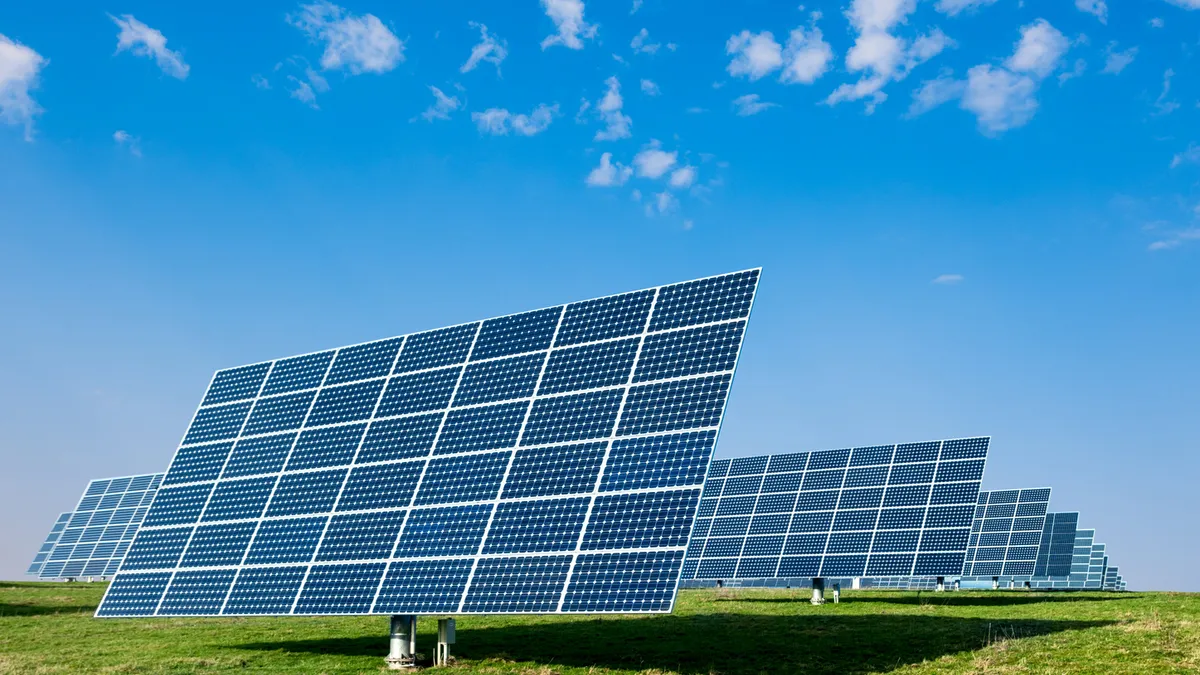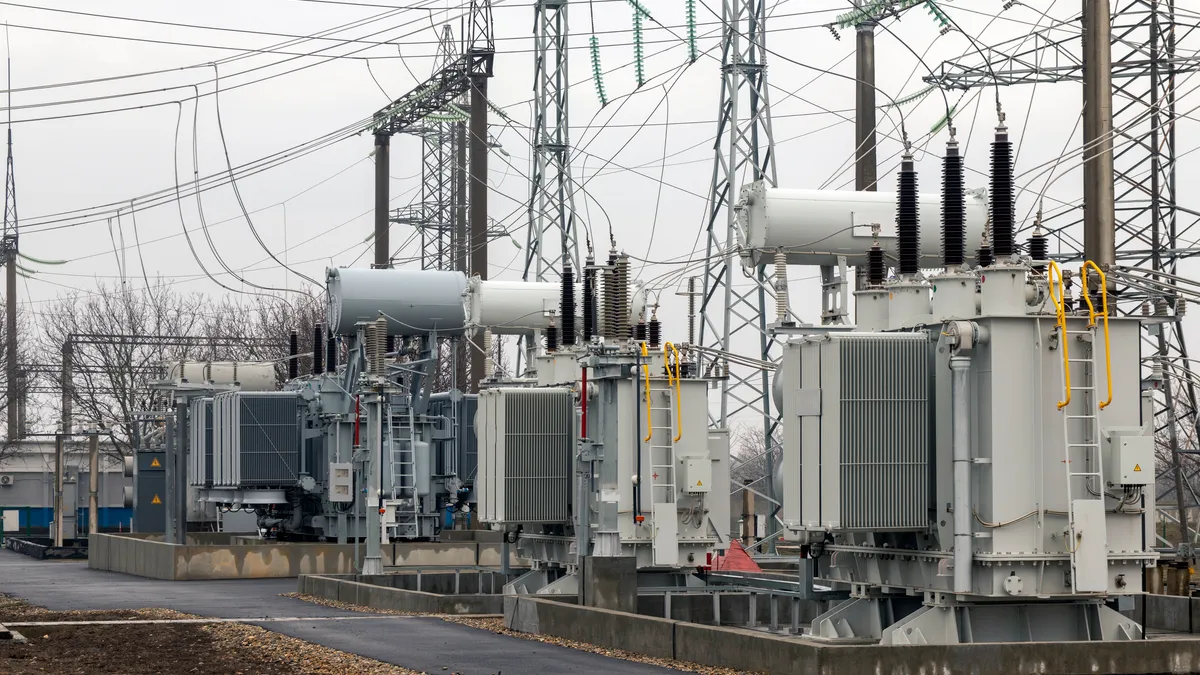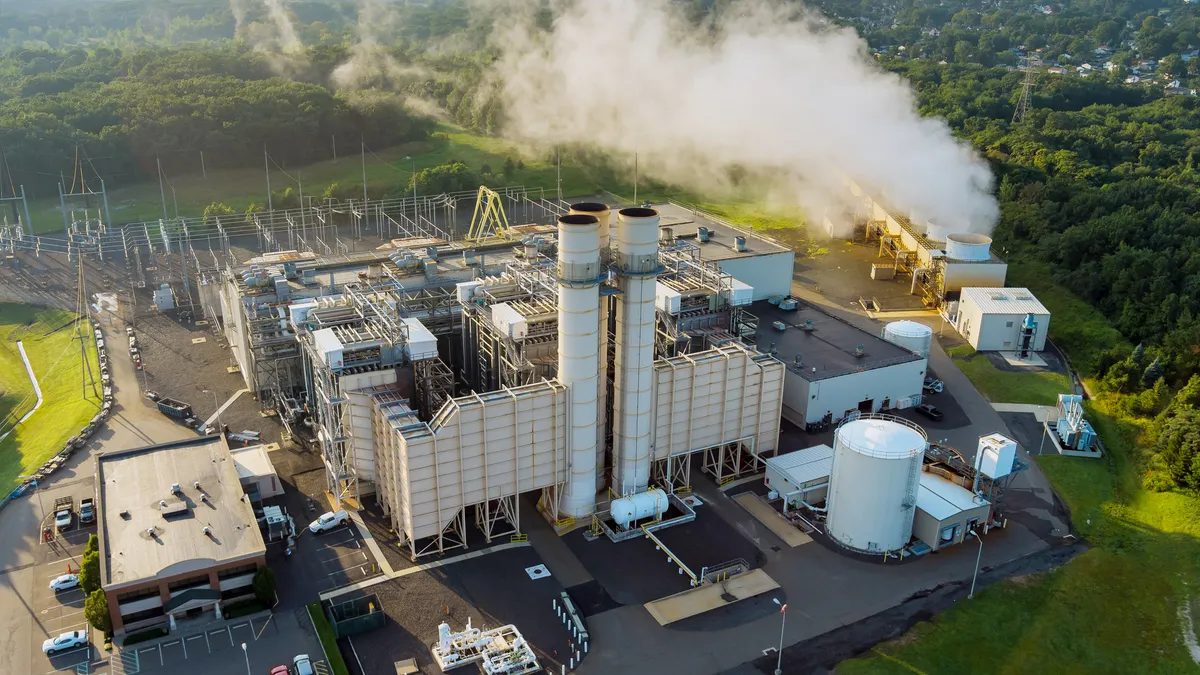Utility-led community solar has not yet seen the skyrocketing growth its advocates promised a few years ago, but a new generation of projects is emerging that could show the way to new possibilities.
“The community solar model is still evolving,” energy consultant Jill Cliburn told Utility Dive. Cliburn is project manager for the Department of Energy-backed Community Solar Value Project, a public-private partnership. “We have to move through a period of innovation, which is by nature a bit unfocused,” she said.
But that innovation is happening — for example, with community solar developers adding complementary attributes like energy storage or demand response to their systems.
Clear growth trend
There are at least 183 utility-led community solar programs with almost 380 MW in online capacity, according to the most recent Smart Electric Power Alliance (SEPA) count. That includes 22 investor-owned utility (IOU) programs with 257 MW of capacity, 30 public power utility (muni) programs representing 41 MW, and 131 rural electric cooperative (co-op) programs with 80 MW of capacity.
Those numbers are up from June 2017’s 13 IOU programs representing 91 MW, 22 muni programs with 29 MW, and 63 co-op programs with 43 MW.
“There are also 848 MW of announced projects in the pipeline, showing a clear growth trend,” SEPA Utility Strategy Manager Dan Chwastyk told Utility Dive.
Some growth will be from IOUs like Portland General Electric (PGE), Pacific Power (PP), and Rocky Mountain Power (RMP).
Oregon regulators recently began working on rules for PGE and PP to build up to 160 MW of community solar, according to PGE spokesperson Laurel Schmidt. RMP’s 20 MW Utah array, though bigger than most community solar projects, is essentially entirely subscribed and the growing waiting list shows there is more demand, Program Manager Keven Hoopiiaina said.
Growth will also come from munis and co-ops.
Deb Roepke, manager of the National Rural Electric Cooperative Association (NRECA) SunShot program, told Utility Dive co-ops have moved beyond small one-off projects of a few hundred kW by distribution co-ops.
“Now, the generation and transmission co-ops that supply distribution co-ops are doing multiple deployments totaling 20 MW or more, with community solar projects of up to 2 MW in their service territories.”
Utilities looking for ways to deliver community solar to new customer segments are also expanding the market. New York IOU Consolidated Edison, and California’s Imperial Irrigation District (IID), a public power utility, are making community solar available to low and moderate income customers.
Utilities are also exploring ways community solar can serve their systems as well as their customers. California’s Sacramento Municipal Utility District (SMUD) is developing projects that will be paired with electric vehicle charging and grid services.
However, SEPA’s Chwastyk said all this does not mean next generation community solar has arrived. He does not foresee “substantial growth in utility-led community solar unless there is an evolution in the product being provided to customers.”
Meeting customer demand with flexibility
Community solar offers a form of solar ownership to the almost 50% of residential and small business customers estimated by the National Renewable Energy Laboratory to not have solar suitable roofs. That could amount to between 32% and 49% of the projected 2020 overall distributed solar market and represent between $8.2 billion and $16.3 billion in cumulative investment.
Chwastyk said there are two basic kinds of utility customers interested in community solar — “those who want bill savings and those who want greener electricity.”
Unlike private sector community solar developers, first generation utility-led community solar programs have not typically provided bill savings "on day one," he said. “Utilities will not see a new generation of growth unless that customer demand is met.”
Customers who want “greener electricity” have always been the “true customers for community solar,” Chwastyk said. But utilities’ resource portfolios now have “higher and higher levels” of mandated renewables.
“If a customer gets 50% renewables from the grid, is there still going to be the same interest in getting green electricity from community solar?”
Consultancy ScottMadden has worked with SEPA and with utilities on customer surveys and focus groups to refine program design,” according to Partner John Pang. The driver is customer demand and the most important barrier is stakeholder engagement, he added.
To get that engagement, it is vital to communicate how community solar’s value proposition addresses customer preferences, Pang said. One key to attracting customers is “simple and straightforward rate structures.”
Cliburn said utilities can offer different programs for different market segments. That will give utilities “experience with local solar and solving integration problems,” she added. "They can use that experience to grow community solar as well as to design and develop green tariffs for larger customers."
Success in Fremont
Chwastyk said the success of the Municipal Utility of Freemont, NE, SunShares program may be one version of next generation community solar.
Fremont worked with SEPA on a survey to understand what customers wanted, Department of Utilities General Manager Brian Newton told Utility Dive. “About 70% of our customers were willing to participate and some were willing to spend more money to own solar.”
Chwastyk said the survey also showed residential customers did not want a high upfront payment or a long-term contract. “They were already uncertain about the idea of community solar,” he said. “They want to be able to get out with no strings attached if they need to.”
Newton said the utility decided the best way to capture the interest was to offer two kinds of subscriptions.
For the 1.5 MW, 5,000 panel array, Fremont offered customers the option of purchasing panels at an upfront price of $180 each for a 20-year term. Fremont estimates payback on the purchase “is about 9 years,” Newton added.
Customers can avoid a long-term commitment and upfront payment by subscribing for blocks of the project’s monthly energy output. “It almost nets out so it is a good hedge against the rising cost of electricity over time,” Newton said.
Fremont sold out in 7 weeks to 180 residential customers and 18 commercial customers. They committed to energy shares for the output of about 2,500 panels and purchased about 2,500 panels with upfront payments. Newton said his impression was that more customers bought in “because solar is good for the environment” than those who committed “because it is a good hedge.”
Construction started in October and the project is scheduled to go online in December. There is already a 70-customer waiting list for the next phase in a community of only 26,000 people.
“We started out thinking we would only do shares but we kept getting requests for the other option,” Newton said. “When I am asked why the program is successful, I tell them it offers both options and that is because we listened to our customers.”
Madison Gas and Electric (MGE) also did advance customer research with SEPA and ScottMadden, Strategic Products and Services VP Don Peterson told Utility Dive. It, too, found customers objected to high upfront payments and long-term contracts. “They want to pay-as-they-go, like with cell phones and TV services,” Peterson said.
MGE used traditional utility ratemaking to determine a next generation monthly payment plan for the 250 kW blocks in its 500-kW array, he said. At a premium of less than $0.02/kWh over retail, it sold out to about 230 subscribers in a month with limited marketing. “There are two reasons they subscribed,” Peterson said. “One is they wanted solar. The other is the hedge against retail electricity price increases.”
Madison is “a very progressive place” and MGE’s customers “want to support renewable energy,” Peterson said. “But it is important to provide the kind of program they want.”
MGE kept this project’s rate design as simple as possible to ease its way through the regulatory process, Peterson added. The utility wants to open the next project to more customer classes but has not found an "elegant solution" to the rate design complications of commercial customers with demand charges and time of use rates, he said.
Co-ops have the most community solar programs but the smallest MW-per-program average because there are so many small co-ops using a wide range of program designs, NRECA’s Roepke said. Eventually, the successful ones will prevail “but we don’t know which those are right now because this is relatively new.”
One next generation characteristic she sees emerging is “more anchor tenants” because that makes it easier to fill out the array with no-upfront, no-long-term-contract subscribers, she said. “In our recent survey, at least half the generation and transmission co-ops said they are seeing interest from commercial-industrial (C&I) customers.”
Very small, early co-op arrays, sized to meet demand, were uneconomical and made it necessary to build a new array if there was new demand, Roepke said. If large, usually C&I, anchor tenants commit in advance, they often provide up-front capital and allow up-sizing the array. “Then there is a lot more flexibility in how much community solar you can offer to your members,” she added.
Solar plus
There is a problem with program innovation aimed only at meeting customer demand, SEPA’s Chwastyk said. It is completely understandable that utilities, and especially public power and cooperative utilities, want to provide what their customers want. But something more may be needed.
“There are new programs, but, unlike the market being developed by private sector builders, we have not seen many utilities expanding existing programs,” he said.
To drive expansion, utilities need to find program designs that include “additional drivers” to both meet customer demand and utility system needs, he added.
Community solar plus is “largely conceptual” now, according to Interstate Renewable Energy Council (IREC) Regulatory Program Director Sara Baldwin Auck. Auck co-authored IREC’s National Shared Renewables Scorecard and worked on many state community solar policies.
The concept is to combine community solar “with complementary attributes, such as energy storage or demand response,” she said. It “enhances the value proposition of the community solar to the grid, utilities and participating customers.”
The best now-online example is the Steele Waseca Electric Cooperative (SWCE) program. The utility discounts the upfront cost of subscribing to its solar array and gives a free electric water heater to customers who choose to participate in its demand response program.
SWCE recoups the program’s cost “through additional electric sales from the water heating and the savings on wholesale power costs by shifting purchases dedicated to water heating to off-peak hours,” according to a SEPA study.
“The most interesting thing about the Steel Waseca program is that there are not a hundred other Steel Waseca programs out there,” Chwastyk said.
ScottMadden’s Pang said next generation community-solar-plus-battery-storage will be one of a "new array of services” utilities offer. “Specifics have yet to be worked out, such as who owns the battery and how you properly credit subscribers, but the addition of storage should not be ignored.”
Hawaii regulators are expected to soon approve a Community Based Renewable Energy (CBRE) plan that will require community solar projects to include time-of-use (TOU) rates as part of the bill credit value. TOU rates are expected to allow community renewables to help reduce system peak usage and provide grid services.
Cliburn said utilities are working on solar plus demand response, solar plus storage, and solar tailored to market segments. Examples are Xcel Energy Colorado buying solar generation from local community solar arrays and SMUD building a portfolio of community solar arrays that offer different customer choices.
The Imperial Irrigation District proposal would tailor community solar to serve its low and moderate income (LMI) market segment. The utility’s eGreen plan would use its 2018 Renewable Energy Assistance Program (REAP) budget of $4.9 million to build community solar for its 15,000 LMI customers, IID spokesperson Marion Champion told Utility Dive.
Instead of a 20% to 30% discounted electricity bill, all IID LMI customers would get a portion of the community solar output of equivalent or greater value, she added.
Cliburn said these and many other planned programs show utilities intend to “experiment” with projects “that push the envelope.” If they are developed, it will recapture the “original vision” of community solar as “the market-based laboratory for local solar innovation,” she said.





















